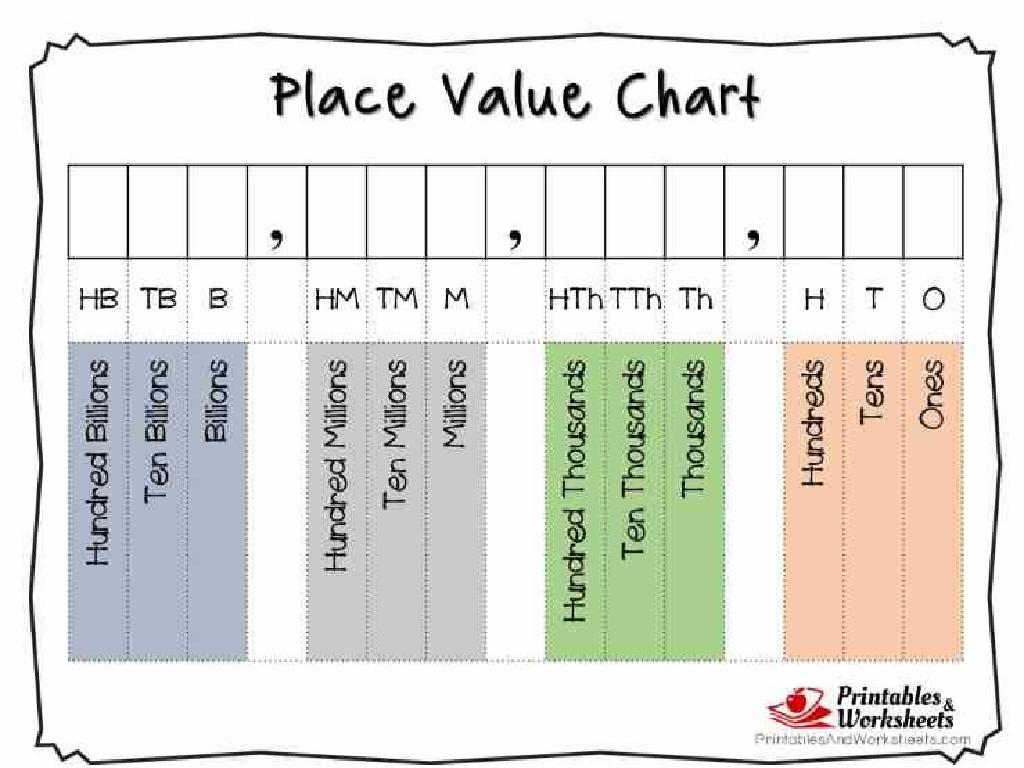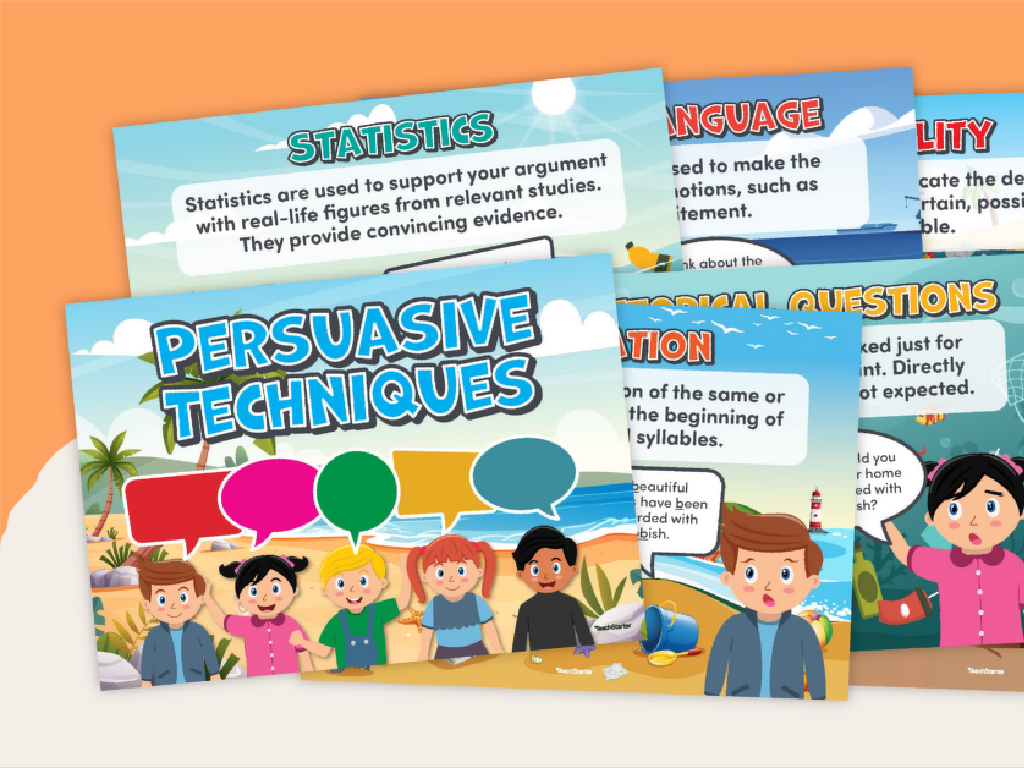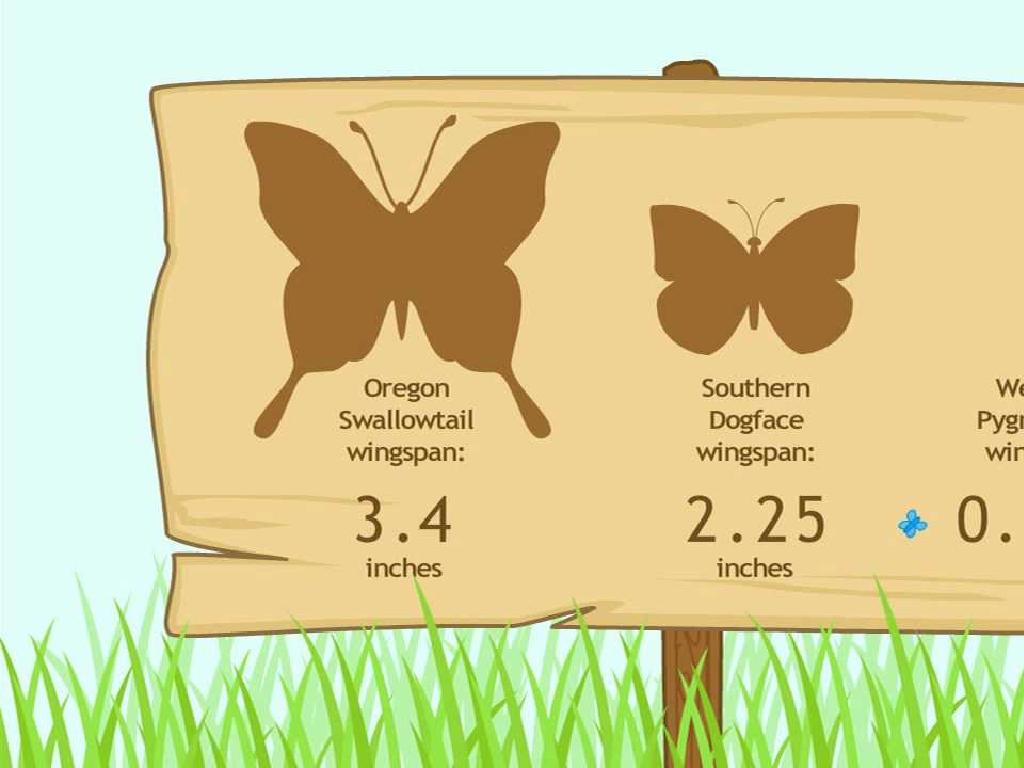Which Word Has The Same Ending?
Subject: Language arts
Grade: Kindergarten
Topic: Rhyming
Please LOG IN to download the presentation. Access is available to registered users only.
View More Content
Welcome to Rhyming Words!
– Discover words that sound the same
– Think of words that rhyme
– Do ‘cat’ and ‘hat’ sound alike at the end?
– Rhyming makes reading fun
– Rhymes help us predict and remember words
– Practice rhyming with friends
– Share your rhyming words with classmates
|
This slide is designed to introduce kindergarteners to the concept of rhyming words. Start by explaining that rhyming words have the same ending sounds, like ‘cat’ and ‘hat’. Encourage the children to listen for these sounds and think of their own examples. Emphasize that rhyming can make learning to read more enjoyable because it helps with word prediction and memory. Plan a class activity where students can practice finding rhymes and share them with their friends, fostering a fun and interactive learning environment.
Rhyming Words Fun!
– What does ‘rhyme’ mean?
– Rhyme means words sound the same at the end.
– Words with matching sounds
– ‘Cat’ and ‘hat’ both end with ‘at’
– Like ‘cat’ and ‘hat’, can you think of others?
– Let’s listen and find rhymes!
– We’ll say words aloud and discover rhymes.
|
This slide introduces the concept of rhyming to Kindergarten students. Start by explaining that rhyming words have the same ending sounds. Use simple, familiar words as examples to illustrate the concept. For instance, ‘cat’ and ‘hat’ are easy to understand and clearly demonstrate the idea of rhyming. Engage the students by listening to rhyming words together, which can be done through a song, a poem, or an interactive game. Encourage the children to participate by identifying rhymes and coming up with their own examples. This activity will help them develop phonemic awareness, an essential skill for early reading development.
Matching Rhyming Words
– Rhymes have matching endings
– Listen to the word ‘dog’
– Say ‘dog’ and listen to its ending sound
– Find a word that sounds like ‘dog’
– Think of a word ending with ‘og’ like ‘log’ or ‘frog’
– We’ll match rhymes together
|
This slide is designed to introduce Kindergarten students to the concept of rhyming by focusing on the ending sounds of words. Start by explaining that rhyming words have the same ending sounds. Demonstrate by saying the word ‘dog’ clearly and encourage the children to listen carefully to the ending. Then, ask the students to think of and say words that rhyme with ‘dog’. Provide guidance and confirmation when they find a match. This activity can be interactive and fun, encouraging the children to explore sounds and enhance their phonetic awareness. It’s also a great opportunity to build their vocabulary with simple, rhyming words.
Rhyming Word Families
– Words that sound the same
– The ‘-og’ family: dog, log, frog
– Words that end with the same sound belong together
– Find more ‘-og’ family words
– Think of words that end like ‘dog’. What sounds like ‘log’?
– Share your rhyming words
– We’ll take turns telling the class our rhymes
|
This slide introduces the concept of rhyming word families to Kindergarten students. Start by explaining that some words are in the same ‘family’ because they have the same ending sounds. Use the ‘-og’ family as an example and show the words ‘dog’, ‘log’, and ‘frog’. Encourage the children to think of other words that rhyme with ‘dog’ and ‘log’. Make it interactive by asking them to come up with their own words and share with the class. This activity will help them recognize patterns in word endings and enhance their phonological awareness, which is crucial for their reading development.
Let’s Practice Rhyming!
– Two words: Do they rhyme?
– Clap if words rhyme
– We clap our hands when two words sound the same at the end
– Get ready to find rhymes
– Let’s start rhyming together
|
This slide is designed to engage Kindergarten students in a fun and interactive rhyming activity. Start by explaining that rhyming words have the same ending sounds. Demonstrate with a pair of words, like ‘cat’ and ‘hat’, and clap your hands if they rhyme. Encourage the students to listen carefully and clap along when they hear a rhyming pair. This activity helps students develop phonemic awareness, an essential skill in early reading development. Prepare a list of rhyming word pairs in advance and be ready to guide the students through the activity, ensuring that each child has the opportunity to participate and learn.
Rhyme Time Game
– Let’s play a rhyming game
– I say a word, you find its friend
– Endings must sound just the same
– Words like ‘cat’ and ‘hat’ rhyme
– Ready to find the rhyme?
|
This slide introduces a fun and interactive rhyming game for the students. Begin by explaining what a rhyme is and demonstrate with a few examples. For instance, ‘cat’ and ‘hat’ have the same ending sound, so they rhyme. Encourage the children to listen carefully to the word you say and then think of another word that sounds the same at the end. This activity will help them develop phonemic awareness and enjoy the musical aspect of language. For the activity, you can use words like ‘dog’ and ‘frog’, ‘bee’ and ‘tree’, ‘sun’ and ‘fun’. Make sure to praise their efforts and correct gently, providing the right rhymes when they are stuck.
Class Activity: Finding Rhyming Pairs
– Match cards with rhyming words
– Find pairs that sound the same at the end
– Words like ‘cat’ and ‘hat’ have the same ending sound
– Share your rhyming pairs with friends
– Enjoy learning rhymes together!
|
This activity is designed to help Kindergarten students recognize and match rhyming words, an essential skill in language arts. Provide each student with a set of word cards. Instruct them to listen for words that end with the same sounds and match those cards together. Once they’ve found a pair, they can share their rhyming words with the class. This will reinforce their understanding of rhymes and phonemic awareness. Possible variations of the activity could include rhyming memory games, rhyming bingo, or a rhyming scavenger hunt where students find objects around the classroom that rhyme with given words.
Rhyme Time Roundup
– Celebrate finding rhymes
– Rhyming boosts reading skills
– Rhyming words end the same and sound alike, like ‘cat’ and ‘hat’.
– Rhymes make poems/songs fun
– We can create our own rhymes to make music and poetry.
– Listen for rhymes daily
– Keep an ear out for words that sound the same at the end in stories, songs, and conversations.
|
Well done to all the students for their hard work in learning about rhyming words! It’s important to reinforce the idea that rhyming is not just a fun activity but also a valuable tool for improving reading abilities and phonemic awareness. Encourage the children to continue practicing by listening for rhyming words in everyday life, whether in music, during storytime, or even in conversations. This will help them develop a natural sensitivity to language patterns and aid in their literacy journey. As a follow-up activity, consider having students create simple rhymes or short poems using their favorite rhyming words, and share them with the class to celebrate their progress.





